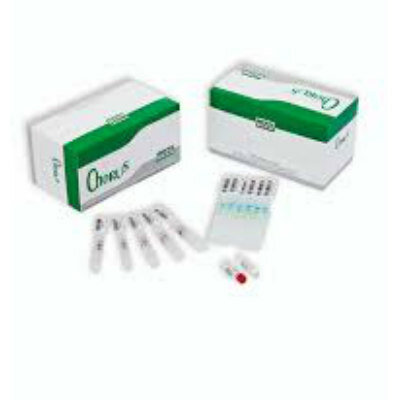Depletion of DNA Precursors May Trigger Cellular Senescence
By LabMedica International staff writers
Posted on 25 Dec 2012
The tumor suppressing mechanism known as oncogene-induce cellular senescence results from DNA damage that might be triggered by depletion of DNA precursor molecules as well as by previously described phenomena such as oxidative stress and hyperreplication of genomic DNA.Posted on 25 Dec 2012
Recently, it has been shown that oncogene-induced senescence (OIS) occurs during the early stages of tumorigenesis. Senescent tumor cells are abundant within premalignant neoplastic lesions, whereas they are scarce in malignant tumors. This association of senescence with the premalignant stages of tumor progression opens the possibility of using senescence markers as diagnostic and prognostic tools. Moreover, some chemotherapeutic protocols induce senescence in tumor cells and, consequently, senescence markers could help to monitor treatment response.
Cellular senescence, a permanent cell cycle arrest, is considered a safeguard mechanism that may prevent aged or abnormal cells from further expansion. OIS is characterized by permanent growth arrest and the acquisition of a secretory, proinflammatory state. While OIS is now viewed as an important barrier to tumorigenesis, relatively little is known about the metabolic changes that accompany and therefore may contribute to OIS.
Investigators at the Roswell Park Cancer Institute (Buffalo, NY, USA) worked with cultures of normal human fibroblasts (NHFs) undergoing senescence induced by the HRAS oncogene with the G12V mutation. They reported in the December 14, 2012, edition of the American Journal of Pathology that these NHF-HRASG12V cells underexpressed thymidylate synthase (TS) and ribonucleotide reductase (RR), two enzymes required for the entire de novo deoxyribonucleotide biosynthesis, and possessed low deoxyribonucleoside triphosphate (dNTP) levels.
Ectopic coexpression of TS and RR or addition of deoxyribonucleosides substantially suppressed DNA damage, senescence-associated phenotypes, and proliferation arrest in two types of NHF-expressing HRASG12V. In contrast, short hairpin RNA-mediated suppression of TS and RR caused DNA damage and senescence in NHFs, although less efficiently than HRASG12V.
"OIS represents an important fail-safe mechanism that suppresses proliferation of premalignant cells," said senior author Dr. Mikhail Nikiforov, associate professor of oncology at the Roswell Park Cancer Institute. "Compelling evidence suggests that one of the intrinsic processes required for the induction of OIS is the cellular response to DNA damage. We believe our data identify a previously unknown role of deoxyribonucleotides in regulation of oncogene-induced senescence. Our results suggest that both nucleotide depletion and active DNA replication are required for efficient induction of DNA damage and OIS."
Related Links:
Roswell Park Cancer Institute














